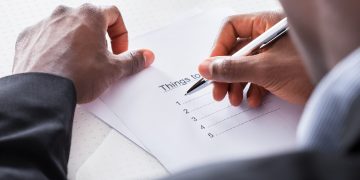Subsection of: Amira’s Story
Provided by the International Finance Corporation
Year 1 – Start-up
The following article describes the beginning of her business. You will see the initial transactions and how they translate into accounting reports such as the Balance Sheet. Finally, you can see what her Net Worth was at the end of her first month in business (using the Accounting Equation Net Worth = the value of everything owned less the value of everything owed)
- Her business started when she borrowed $1,000 from her bank to be repaid over 10 years.
- In her first month:
- She used the loan from the bank to buy a second-hand truck for $150, some ready-made furniture (4 pieces) for $400 and to pay $50 for advertising in a local newspaper.
- She bought the furniture on 60 day credit (meaning she was allowed to pay for it up to 60 days after she received it).
- She paid for the truck and advertising in cash immediately.
- She sold two of the pieces of furniture for a total of $600 in cash which she deposited into the bank account.
- She sold one other piece for $400 on 30 day credit (meaning she received the money after 30 days).
- Repayments on the loan are deducted automatically from the business bank account at $14 per month of which $7 is interest and $7 is repayment of the capital.
- Other expenses of running the business $125 (all paid in cash).
- She expected the truck to last 3 years and decided that she will show the cost of it spread over that period which means $150/36(months) = $4 per month.
- She received an investment of $500 from her father in cash.
So, let’s see what her balance sheet looks like
At the end of month 1, the business owns:
- 1 truck cost/value $150 less the amount charged for usage/depreciation that month of $4 = $146
- 1 unsold item of furniture cost/value $100
- Amount owed for the sale of 1 piece of furniture of $400
- Cash in the bank of $1,761 (calculated as follows)
| Transaction | Cash Out | Cash In |
| Loan from Bank | 1000 | |
| Purchase Truck | 150 | |
| Purchase Advertising | 50 | |
| Sale of 2 pieces of furniture for cash | 600 | |
| Loan repayment | 14 | |
| Other expenses | 125 | |
| Investment from father ; | 500 | |
| Totals | 339 | 2,100 |
| 339 | ||
| Balance | 1,761 |
That gives a total of (146 + 100 + 400 + 1,761) $2,407
We can now work out what the business Owes:
- The amount outstanding on the loan is $1,000 less the capital amount repaid $7 = $993
- Amount owed for the purchase of the 4 pieces of furniture $400
That gives a total of (993 + 400) $1,393
So, we can show that the business OWNS $2,407
We can also see that the business OWES $$1,393
The difference is $1,014 (this is called the Net Worth)
Now we need to calculate the capital investment, which is the total of direct investment in the business and any profits made that have not been taken out in the form of drawings by the owner or dividends paid to investors.
To do that we need to prepare a Profit and Loss Account.
| Sales |
$ |
$ |
|
Cash Sales 2 pieces |
600 |
|
|
Credit Sales 1 piece |
400 |
|
| Total Value of Sales |
1,000 |
|
| Less cost of Goods sold | ||
| Opening stock of furniture |
– |
|
| Purchase of furniture |
400 |
|
|
400 |
||
| Less closing stock of furniture |
100 |
300 |
| Gross profit |
700 |
|
| Less Expenses | ||
| Advertising |
50 |
|
| Other expenses |
125 |
175 |
| Profit or Earnings Before Interest, Tax, Depreciation, and Amortization (EBITDA) |
525 |
|
| Other charges | ||
| Interest |
7 |
|
| Depreciation |
4 |
11 |
| Retained Profit or Earnings |
514 |
We can see that the difference between what is Owned and what is Owed is equal to the net profit for the month of $514 plus the capital investment from her father of $500 = $1,014. This is no accident. A properly functioning, double entry bookkeeping system ensures that this is the case by demanding that the effect on the underlying assets and liabilities is recorded for every financial transaction that happens.
See the FAQs for more explanation of the bookkeeping process. Don’t worry if you struggle to understand it. A special type of mind is needed to intuitively see a business in terms of double entry bookkeeping. The rest of us need years of university and professional-level study to master it. Find also here some tips on how to use financial statements.
<BACK TO AMIRA’S STORY MAIN PAGE
<BACK TO YEARS 2 AND 3 – BUDGETING AND CASH FLOW
<BACK TO YEAR 5 – RECIPE FOR DISASTER
>GO TO YEAR 6 – THE FUTURE IS BRIGHT
Copyright © 2000 – 2017, International Finance Corporation. All Rights Reserved.
2121 Pennsylvania Avenue, N.W., Washington, D.C. 20433, www.ifc.org
The material in this work is copyrighted. Copying and/or transmitting portions or all of this work without permission may be a violation of applicable law. IFC does not guarantee the accuracy, reliability or completeness of the content included in this work, or for the conclusions or judgments described herein, and accepts no responsibility or liability for any omissions or errors (including, without limitation, typographical errors and technical errors) in the content whatsoever or for reliance thereon.









